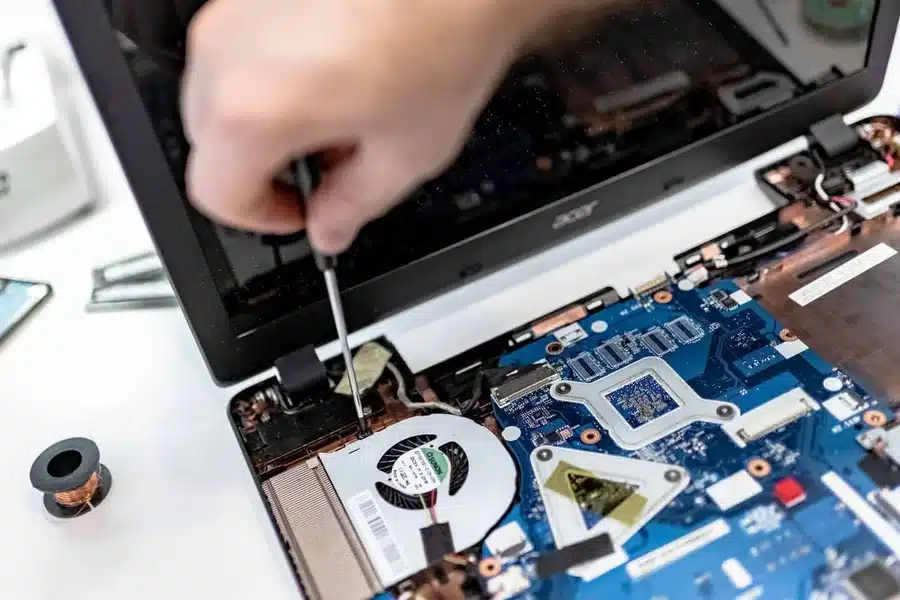Laptops are essential tools for work, school, entertainment, and everything. So, when your laptop suddenly refuses to turn on or starts acting strangely, it can throw your entire routine into chaos. While it’s tempting to panic, the proper steps can help you regain control and avoid a costly replacement.
Below is a practical guide on what to do when your laptop breaks down, how to determine the seriousness of the issue, and when it might be time to seek professional help for laptop repair.
Stay Calm and Observe the Symptoms
Before jumping to conclusions, take a breath and observe what’s happening. Is the laptop turning on but not booting properly? Are there error messages? Is it unusually hot or making strange noises? These early observations can help you pinpoint the problem.
Try a Basic Restart
Sometimes, it’s just a glitch. If your laptop is frozen or acting up, try a hard restart. Hold the power button down until the system shuts off completely. Please wait a few seconds, then power it back on. This simple trick can clear temporary errors and restore normal function.
Check the Power Source
If your laptop isn’t turning on, the issue could be as fundamental as a faulty charger or a dead battery. Ensure the charger is plugged in correctly, the outlet works, and the power light is on. Try removing the battery (if it’s removable) and plugging the charger directly into the laptop. If it powers on, the battery might be the culprit.
Identify Whether It’s a Hardware or Software Issue
Understanding whether your problem is hardware or software-based can save time and prevent unnecessary expenses.
Signs of Hardware Issues
- No power despite a working charger
- Flickering or black screen
- Loud fan noises or overheating
- Keys or trackpad not responding
- Physical damage (e.g., cracked screen or broken hinges)
Signs of Software Issues
- Laptop boots but is stuck on loading screens
- Frequent crashes or blue screens
- Sudden slowdowns
- Applications not opening or behaving erratically
- Virus or malware alerts
Knowing the difference can help you decide whether a complete or straightforward laptop repair service is necessary.
Perform Basic Troubleshooting
If the issue appears minor and you’re comfortable with tech, you can attempt some basic troubleshooting steps.
Boot in Safe Mode
Safe Mode starts your laptop with minimal drivers and can help diagnose software problems. If your computer functions normally in Safe Mode, it’s likely a software conflict or driver issue.
Run a Virus Scan
Viruses can wreak havoc on system performance. Use built-in or third-party antivirus tools to scan your system. If malware is detected, quarantining or removing it may restore regular operation.
Free Up Space and Resources
Lack of storage and high background activity can slow your laptop down. Try clearing unnecessary files, disabling startup programs, and updating your software.
When to Seek Professional Help
While DIY can solve minor problems, some require trained eyes and tools. Tampering with your laptop may void its warranty. In cases of serious hardware failure—like a dead motherboard, corrupted hard drive, or broken screen—it’s best to seek professional laptop repair services.
Here are some scenarios where expert help is advised:
- Your laptop won’t turn on despite multiple attempts
- There’s physical damage,ike a cracked screen or a water spill
- You suspect hard drive failure
- The system is overheating constantly
- You’re hearing clicking or grinding noises inside the laptop
- The operating system won’t load even after reinstalling attempts
Preventing Future Breakdowns
Once your laptop works again, it’s wise to prevent future issues. Regular maintenance can extend your device’s life and keep it performing at its best.
Keep It Clean
Dust and debris can clog your laptop’s fans and vents, causing overheating. Use compressed air to clean your keyboard and cooling vents regularly.
Update Software Regularly
Keeping your operating system and drivers updated helps patch vulnerabilities and improve performance.
Use a Surge Protector
Power surges can damage internal components. Using a surge protector adds a layer of protection when plugging into outlets, especially in areas prone to voltage fluctuations.
Install Antivirus and Backup Software
Even the most careful users can fall victim to malware. A good antivirus and regular backups will help safeguard your files and system settings.
Final Thoughts
Laptop breakdowns are frustrating, but they don’t always mean disaster. By staying calm, identifying symptoms, and knowing your limits, you can make smarter decisions on fixing it yourself or calling in the pros. Whether it’s a minor hiccup or a more serious issue, a reliable laptop repair can bring your device back to life and save you from a replacement.
Take care of your laptop, and it will take care of you, through every deadline, movie night, and Zoom call life throws your way.



